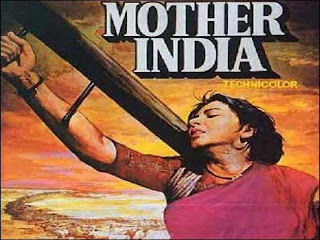An image to remember
by Ekta Malik
The cine world has long held a glamour and attraction to itself. Drawing its followers from the plethora of audience from all classes, it remains the one dominant force of entertainment. The movies become iconic, the movie stars icons. They go on to become part of cultural folklore and memory. Anyone in India born in the sixties would have seen the films and then have made them part of their culture. The real world imitates the reel world. The general viewer wants a piece of the action that is being played on the 75 mm silver screen.
Initially movie posters were made and put up, to announce its release. This created a lot of curiosity and managed to bring the first lot of curious fans to the theatre. The poster was one of the most important things to create attraction and desire. The loud colours and the flamboyant design managed to evoke an interest.
A close up shot of Amitabh Bachchan in the film “Dewaar” wearing that blue shirt went on to be replicated by many of his fans. The image of the moth on the lips of Jodie Foster in the film poster of “Silence of the Lambs” is the way many people remember the film. The menacing picture of the shark in the poster of “Jaws”, Casablanca with Humphrey Bogart and Ingrid Bergman - all these posters went on to become part of public memory and recollection. Mother India - Nargis in that historic pose. Sholay. The list is endless.
Even today after availability of other forms of advertising media like television, radio and internet, the movie posters are still going strong and they are continued to be made with new and latest technologies. Apart from just serving as means of advertising, they have also now become collector’s item by avid film fans.
Ankita Chawla an avid film goer and film buff says, “I love collecting old film posters. They have such charm. When I buy a poster I feel that I am carrying some part of the film with me.” She has twenty film posters. And they have been collected from everywhere and also come at almost every price.
In all likelihood our rooms have a life like picture of our favourite movie star from our favourite movie. We own that piece of stardom. And this stardom is easily available for anyone to own. Right from the street hawkers at Janpath selling copies of these posters, each for 20 rupees to the designer boutiques of any up market mall – with them anybody can access this part of film history.
Vikas posterwallah sells posters of films, film stars in the inner circle of Connaught place, from the past seven years. “Every day I sell almost 5-6 posters. On weekends it is 10-15. The young people buy the new films, the older ones of old films. It’s good for my business. “
Film posters have changed through the years. They might not be hand painted anymore but printed on glossy papers with the latest technology. But they haven’t lost their appeal. They continue to entice the audience of the current movies, and people from all generation even when they are out of theatres.



Credit: Few photos of the posters are downloaded from copyright free sites of images.






















